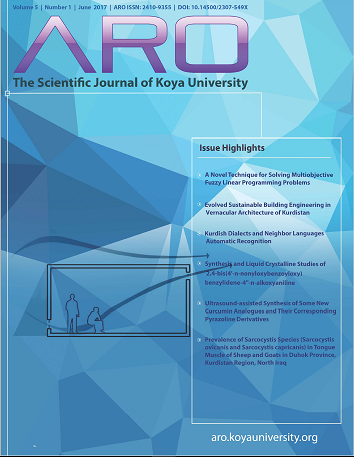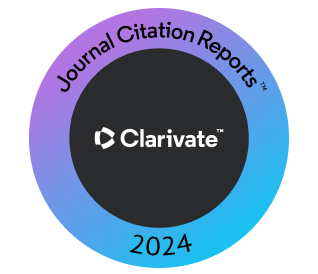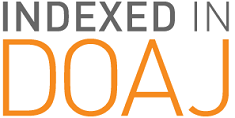Evolved Sustainable Building Engineering in Vernacular Architecture of Kurdistan
Abstract
Vernacular Architecture in Kurdistan is a widely understudied subject. Whilst rapid development is taking place across the Kurdistan region of Iraq, the lack of a clear knowledge of local building traditions has led to the loss of locality and engineering adaptability of newly developed buildings. Advances in mass development in the Kurdistan region need to have clear signs of Kurdish cultural heritage alongside lasting and sustainable solutions. The study of mountain villages of rural Kurdistan will provide valuable information about sustainable building practices as well as cultural values in regional settlements. This in turn will be useful in finding more adoptable green choices in the region and identifying the characteristics of the evolved building engineering of these indigenous settlements. This paper will first describes the characteristics of the evolved engineering and sustainable adoptions of Kurdish historical building traditions through selected site visits to Kurdish vernacular settlements and then analyses the building customs of rural communities of Kurdistan for possible adoption in contemporary developments.
Downloads
References
Arboleda, G., 2006. Vernacular Architecture. [Website] Available at: {http://www.vernaculararchitecture.com} [Accessed 2 July 2015].
Aristova, T. and Testen, D., 1996. Kurds, Available at: {https://goo.gl/Ah4pWv} [Accessed: 10 Aug 2015].
Battaini-Dragoni, G., 2008. 'The rural vernacular habitat, a heritage in our landscape', Futuropa, 1(1), pp. 3 [Online]. Available at: {http://www.unimi.it/img/news/Futuropa_1_EN.pdf} [Accessed: 15 May 2015].
Burgess, C. and Wetherell, D., 2005. Architecture, town planning and community. Edmonton: University of Alberta Press.
Gehl, J., 2013. Cities for people. 2nd ed. Island Press.
Hardie, G. J., 1985. 'Continuity and Change in the Tswana’s House and Settlement Form', in Altman, I. and Werner, C.M. (ed.) Home Environments. US: Springer US, pp. 213-236.
Hosseini, S. and Shangapour, S., 2010. Study of sustainable settlements of Hawraman, Kurdistan, and its sustainable approaches to design of a residential complex in Mosha Touristic village, Iran. Journal of Sustainable Development, 3(4), p.226 Available at: {http://dx.doi.org/10.5539/jsd.v3n4p226} [Accessed 26 February 2016].
Izady, M.R., 1992. The Kurds: A Concise Handbook, 1st edn., USA: Taylor & Francis.
Jassim, S.Z. and Goff, J.C., 2006. Geology of Iraq. 1st ed. Czech Republic: DOLIN, s.r.o., distributed by Geological Society of London.
Khayat, B.M.A. and Khaznadar B., 2010. 'Formal characteristics of vernacular architecture in Erbil city and other Iraqi cities', The Iraqi Journal of Architectural Engineering, (19), pp. 50-71 [Online]. Available at: {https://goo.gl/Cy4ACz} (Accessed: 11 May 2015).
Lafforgue, E. 2010. [Photograph] At: {http://www.ericlafforgue.com/} (Accessed on 18.09.15), Figure 1. Permission granted,
Matthew Johnson, 2010. English Houses, 1300-1800: Vernacular Architecture, Social Life, 2nd edn., London: Pearson Longman.
Nelson, D., 2009. [Photograph] At: {https://goo.gl/SR17eD} (Accessed on 12.04.15), Figure 8. Permission granted.
Oliver, P, 1997. Encyclopedia of Vernacular Architecture of the World, 1st edn., Cambridge : Cambridge University Press.
Oliver, P., 1987. Dwellings: The House Across the World. illustrated ed. University of Texas Press.
Ozel B., Dipasquale, L. and Mecca, S., 2014. 'Self-sustaining vernacular habitats: the case study of Medina of Chefchaouen', in C. Mileto, F. Vegas, L. García Soriano, and V. Cristini (ed.) Vernacular Architecture: Towards a Sustainable Future. Italy: CRC Press, pp. 583–588.
Pauw, E.D, Saba, M & Ali, S.H, 2015. Mapping climate change in Iraq and Jordan. (1st ed.). Beirut: ICARDA.
Powell, M.R. 2010. [Photograph] At: {http://www.thecandytrail.com} (Accessed on 08.11.15), Figure 6. Permission granted,
Rapoport, A. , 1969. House form and culture, 1st edn., Englewood Cliffs, Prentice-Hall.
Recchia, F, 2012. 'A journey to the other Iraq - Setting up house in Iraqi Kurdistan', Domus, (958), pp. 114-121 [Online]. Available at: {http://architexturez.net/doc/az-cf-124163} (Accessed: 15 April 2015).
Rostam, D. M., Ali, T.K.M. and Atrushi, D.S.S., 2016. Economical and structural feasibility of concrete cellular and solid blocks in Kurdistan region. ARO-THE SCIENTIFIC JOURNAL OF KOYA UNIVERSITY, 4(1), pp.1–7 (http://dx.doi.org/10.14500/aro.10113).
Sangiorgi, F., 2008. 'The vernacular rural heritage: from the past to the future', Futuropa, 1(1), pp. 4-6 [Online]. Available at: {http://www.unimi.it/img/news/Futuropa_1_EN.pdf} (Accessed: 15 May 2015).
Shiel, J. , 1836. Notes on a Journey from Tabríz, Through Kurdistan, via Van, Bitlis, Se'ert and Erbil, to Suleimaniyeh, in July and August, 1836, Article from Journal of the Royal Geographical Society of London, Vol. 8 (1838), pp. 54-101.
Smith, P.E.L., 1974. 'Ganj Dareh Tepe', Paléorient, 2(1), pp. 207-209.
TCPA, 2007. Climate change adaptation by design: A guide for sustainable communities. TCPA, London.. Available at: {http://www.tcpa.org.uk/data/files/bd_cca.pdf} [Accessed 10 Nov 2016].
Tuli, A., 2010. [Photograph] At: {https://www.flickr.com/photos/apaar/5151195679/} (Accessed on 28.08.15), Figure 9. Permission granted.
Zabihi, Kh., Arshi, Z., 1990, Kurdistan "The Meeting" [Hardcover]. Oriental Art Publishing, Sweden.
ZTS, V, 2008. 'Zagros Traditional Settlements (ZTS)'. Paper presented at the International Conference, 30 April - 2 May, Sanandaj, Kurdistan, Iran.
Copyright (c) 2017 Dilan M. Rostam

This work is licensed under a Creative Commons Attribution-NonCommercial-ShareAlike 4.0 International License.
Authors who choose to publish their work with Aro agree to the following terms:
-
Authors retain the copyright to their work and grant the journal the right of first publication. The work is simultaneously licensed under a Creative Commons Attribution License [CC BY-NC-SA 4.0]. This license allows others to share the work with an acknowledgement of the work's authorship and initial publication in this journal.
-
Authors have the freedom to enter into separate agreements for the non-exclusive distribution of the journal's published version of the work. This includes options such as posting it to an institutional repository or publishing it in a book, as long as proper acknowledgement is given to its initial publication in this journal.
-
Authors are encouraged to share and post their work online, including in institutional repositories or on their personal websites, both prior to and during the submission process. This practice can lead to productive exchanges and increase the visibility and citation of the published work.
By agreeing to these terms, authors acknowledge the importance of open access and the benefits it brings to the scholarly community.















 ARO Journal is a scientific, peer-reviewed, periodical, and diamond OAJ that has no APC or ASC.
ARO Journal is a scientific, peer-reviewed, periodical, and diamond OAJ that has no APC or ASC.